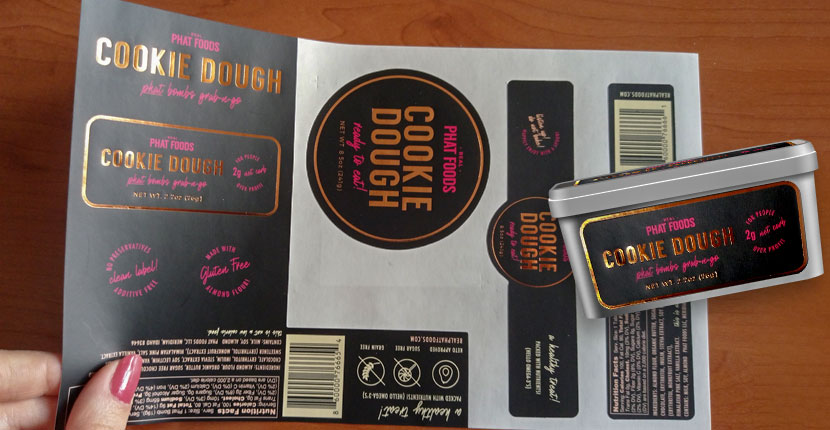Food labels have an important role in attracting customers. They have to be visually inviting and accurately labeled. They are often made out of semi-gloss or gloss paper, but they can be made out of any standard label material: PET film, vinyl, polypropylene, acrylic, etc.
You should think about the following when making a decision about your food packaging label:
- Will the product be stored in the freezer?
- Will the product be stored in extremely hot conditions?
- Will the product be subjected to rough shipping/handling?
- Will the product be stored in a warehouse for a longer period of time (longer than several months)?
- Is cost a very important factor in deciding on the food label stock?
These factors will determine the choice for your product label. It is really important to communicate all these details to your printing professionals, because lack of accurate information can lead to inadequate label material for your food packaging label.
Types of Label Materials
The following are some basic label materials. Each of them consists of many other label materials that each printing press can offer.
Paper
Paper is the most cost effective label stock. It is also among the least durable. In order to make it resistant to different environmental factors, it is advisable to coat it in some way (varnish, laminate, etc.) Depending on the type of printing, coating and type of paper, the labels can be resistant to smudging, moisture, UV; they can be very smooth or rough, shiny or matte, etc.
Pet (polyester) film
This polyester material is very durable. It is a good choice for labels that are to be exposed to harsh conditions, but it’s more costly than paper. Its advantages are full recyclability, high flexibility and good resistance to most environmental factors. PET is often used for labels that will have a longer shelf-life.
Vinyl
Vinyl is a very durable material, resistant to hot and cold weather, UV, chemicals, oils, moisture, etc. It is flexible and good for irregular-shaped packages. However, the process of disposing of vinyl materials is very expensive.
PVC
PVC is a type of vinyl material. It is versatile, durable and flexible. PVC labels have a high shrinkage possibility and are convenient for shrink sleeve labels – labels that are placed over a product and heated in order to shrink and assume an appropriate position on the package.
Polypropylene
If printed and coated in a certain way, polypropylene labels can be as durable as vinyl or polyester ones, and resistant to most environmental factors (all except heat). Polypropylene is less costly than polyester.
Most of these materials can easily be die-cut into a shape of your choice.
Types of Label Finishes
The post-printing process is equally important in label production. It involves adding different types of finishes to the label to make it more durable, shelf-stable or visually appealing. You can discuss the following finishing options with the printing press staff:
Lamination – adding a protective gloss or matte layer to your label for added resistance to moisture, light, abrasion, etc.
Varnish – clear liquid coating, less expensive than lamination, but provides less protection
Foil stamping – way of printing using different tools, where a thin layer of color is pressed upon the label surface
Embossing – method of creating a raised or relief image on the label’s surface
These methods can be combined to give your label a sophisticated, rich look.
To discuss your food packaging label needs, contact our printing professionals at support@foodpackaginglabels.net.

